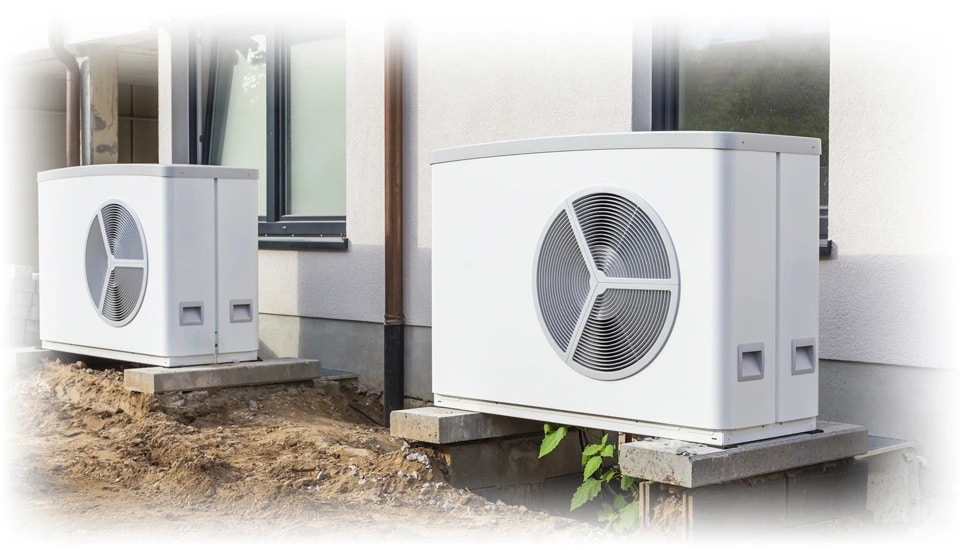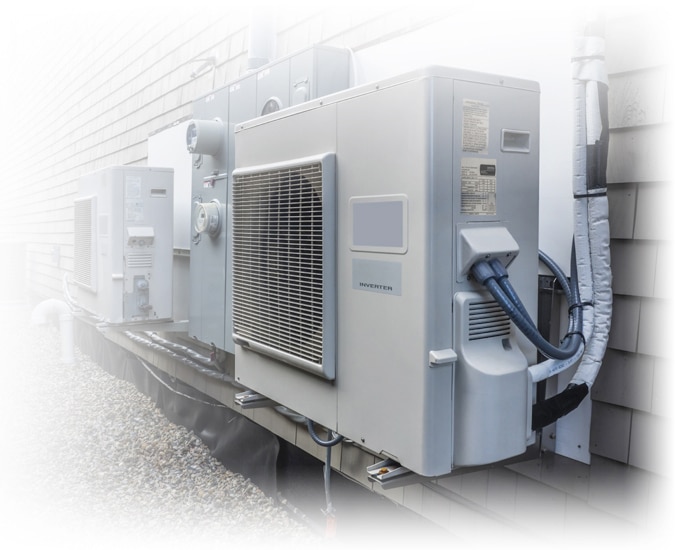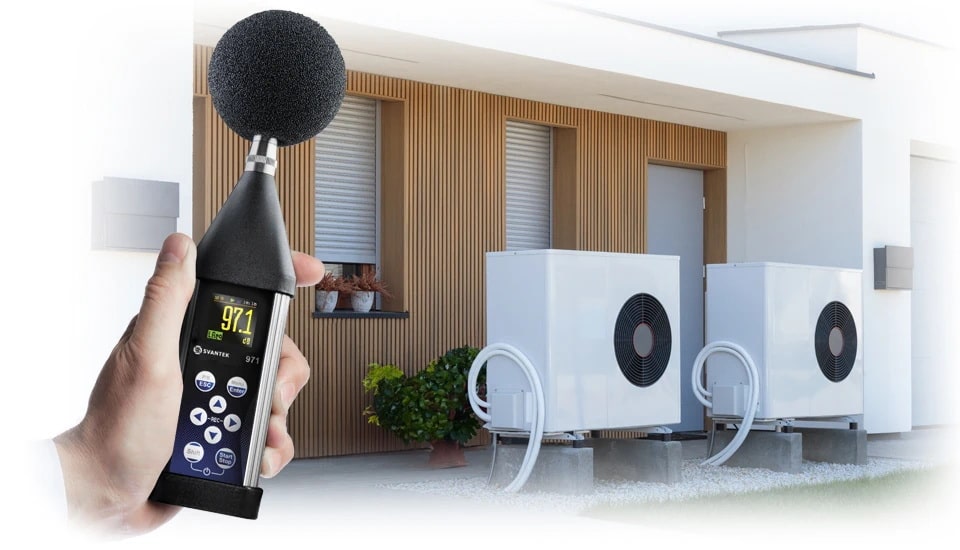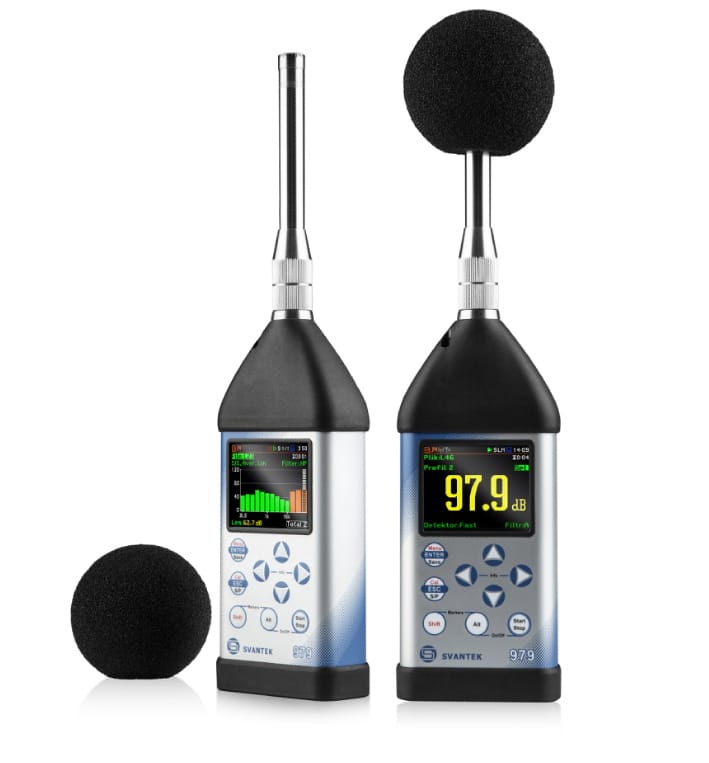Noise from heat pump: how to measure?
Heat pump noise level measurements allow you to determine whether it is necessary to take action to reduce noise, which may include modifying the installation or using additional soundproofing solutions.
Heat pump noise level measurements allow you to determine whether it is necessary to take action to reduce noise, which may include modifying the installation or using additional soundproofing solutions.
Noise from a heat pump is mainly caused by the operation of the compressor, fan and evaporator. These components, depending on their specifications and operating conditions, may emit sounds that prove to be annoying. The noise level is variable and depends on many factors, such as the power of the device, its construction and the way it is installed. The technical characteristics, which can be found on the heat pump product card, also affect the level of noise generated. To minimize noise, it is recommended to choose fans and evaporators with a large surface area and slower rotation, which promotes quieter operation. Investing in inverter compressors, which are known for their lower noise emissions, can also help reduce noise. Additionally, proper installation of the device, away from walls and other surfaces that can amplify noise propagation, will help to reduce its level in the environment. The use of these methods can significantly improve the acoustic comfort in the place of installation of the heat pump.

Measuring heat pump noise is crucial to assess compliance with legal noise limits and to ensure residential comfort. If noise levels exceed the established standards, appropriate mitigation measures—such as soundproofing or operational adjustments—may be necessary to minimize environmental and health impacts. If the noise level exceeds the established limits, it may be necessary to use silencing methods or even stop the operation of the heat pump in order to reduce noise emissions.
During the measurements, it may also turn out that although the noise levels are not exceeded, the problem lies in the insufficient sound insulation of the building facade. Such a situation requires a holistic approach to the problem of noise, taking into account both the levels of sound emission and the architectural conditions of the facility. Accurate diagnosis allows for the selection of the most effective noise reduction methods, which contributes to improving the quality of life of residents and protecting the environment.
The goal of these measurements is to identify whether a heat pump poses a disturbance or health risk due to excessive noise levels. If the noise is within permissible limits but still causes discomfort, the issue may stem from insufficient building insulation rather than the heat pump itself. A precise diagnosis helps determine the most effective noise reduction strategies, whether through technical modifications to the heat pump system or architectural improvements to the property. Moreover, if noise levels surpass legal thresholds, measurement results can serve as grounds for regulatory action or legal claims, ensuring compliance with environmental and public health protections.

Noise level measurements of heat pumps are performed by specialized research laboratories equipped with appropriate measuring devices. Although the regulations do not define specific requirements for companies performing these measurements, it is recommended to use the services of laboratories with accreditation, especially in situations where it is necessary to solve problems with excessive noise. Choosing an accredited laboratory guarantees that the measurements taken will be reliable and in accordance with the applicable standards. Such laboratories not only have the appropriate equipment, but also carry out regular calibrations of measuring devices and have the appropriate experience in the field of acoustics. This allows for an accurate determination of the noise level generated by the heat pump and taking appropriate actions to reduce it.
The enforcement of specific noise limits at installation sites falls under the jurisdiction of individual EU member states. The noise standards for heat pumps in Poland are primarily established by national regulations, specifically the Regulation of the Minister of the Environment of June 14, 2007, which sets permissible noise levels in the environment. These limits are 50 dB during the day and 40 dB at night for single-family residential areas, and 55 dB during the day and 45 dB at night for multi-family residential areas.
The assessment of the building’s sound insulation against heat pump noise is based on the ISO 140-5:1999 standard, which concerns measurements of sound insulation in buildings and their elements, focusing on the airborne sounds of external walls. The application of this standard allows for a precise determination of whether a building provides sufficient protection against noise, which is key both for the comfort of residents and compliance with legal regulations regarding the protection of the acoustic environment.

The measurement method in Poland uses the determination of the equivalent sound level A using direct or computational methods. Key considerations include:
Operational Analysis: Given that heat pumps operate under varying conditions, it’s crucial to identify periods when they produce elevated noise levels. This ensures that measurements capture the maximum potential noise emissions, providing a comprehensive assessment of their acoustic impact.
Selection of Measurement Points: Proper placement of measurement locations is vital for obtaining representative data:
In Unbuilt Areas: Measurements should be taken at a height of 1.5 meters above ground level.
In Built-Up Areas: Measurements should be conducted between 0.5 to 2 meters from the building façade, ideally aligning with the window most exposed to the noise source.
Alternative Measurement Height: If standard positions are inaccessible or impractical, measurements may be performed at a height of 4 meters.
By meticulously following these guidelines, one can obtain reliable and accurate data that reflects the true noise levels generated by the heat pump, ensuring both regulatory compliance and the maintenance of a comfortable acoustic environment for residents.
The time needed to measure the noise generated by the heat pump is variable and depends on several factors, mainly on the characteristics of the pump itself. Since heat pumps can operate in cycles – starting and stopping at different intervals – a detailed analysis of these cycles is time-consuming, especially if there are differences in operating cycles depending on the day of the week. In such cases, to accurately assess the variability of noise, additional time is needed to observe and record data. In the case of a constant noise generated by a heat pump, the measurement can be much faster and consist of taking a few samples in a short time. In each case, in addition to the measurement time itself, it is also necessary to take into account the time required to prepare the equipment, calibrate it and set the measurement points correctly in accordance with the regulatory requirements. All of this affects the total time needed to conduct reliable noise measurements of a heat pump.
For noise measurements of heat pumps, a sound level meter with an accuracy class of 1 shall be used. Such a meter must be calibrated using a standard sound source also of class 1 accuracy, which ensures high measurement precision. It is important that the calibration of the instruments is carried out no later than 2 years before the measurements are taken, which guarantees the up-to-date and reliable results. An essential element of the measurement set is also a wind screen for the microphone, which is designed to minimize the impact of interference on the accuracy of measurements.
In addition, to ensure proper operation of the measuring set, certain meteorological conditions must be observed during measurements. If the manufacturer of the meter has not defined specific operating ranges of the device, measurements should be taken at a temperature of -10°C to 50°C, with a relative humidity of 25% to 90%, an average wind speed not exceeding 5 m/s and an atmospheric pressure in the range of 900 hPa to 1100 hPa. Following these guidelines is key to ensuring accurate and reliable measurements of noise generated by heat pumps.
